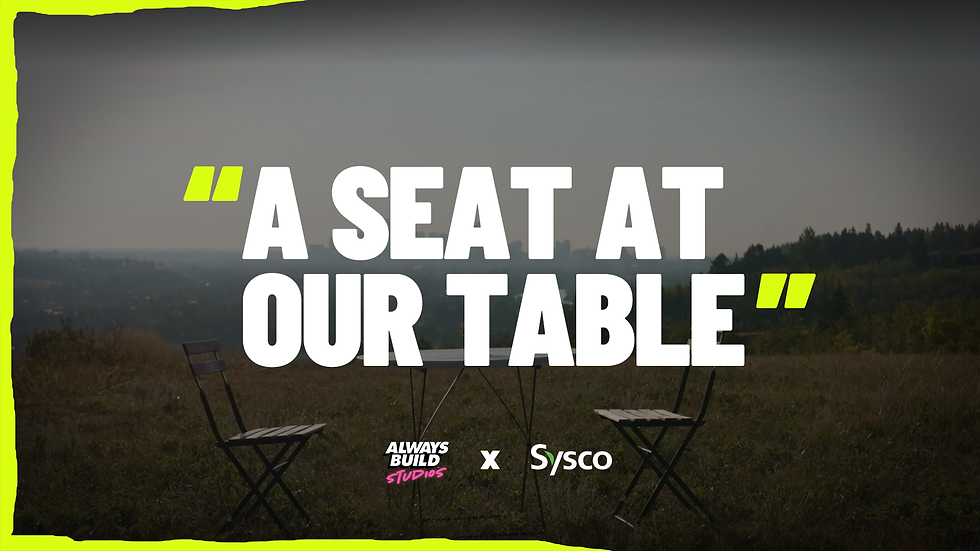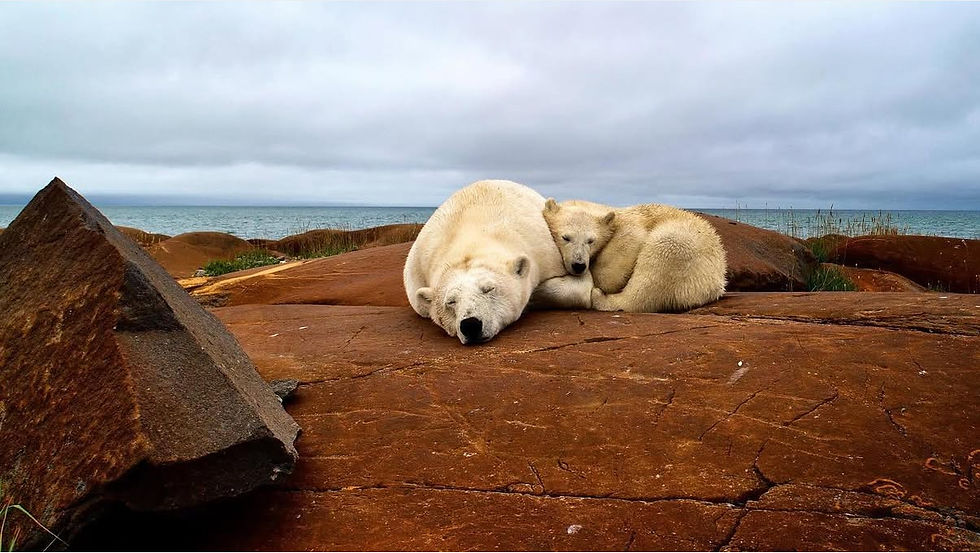Breaking Ice: Storytelling at the Top of the World
- Always Build

- Jul 22
- 4 min read
The Arctic has a way of calling to you. It doesn’t shout—it whispers, through the cold and the stillness. For us, that call began in Churchill, Manitoba, where we filmed polar bears along Hudson Bay. But what kept drawing us back wasn’t just the wildlife—it was something deeper. It was the tension. The urgency. The sense that something critical was unfolding, and we needed to witness it firsthand.
The Arctic isn’t just a vast expanse of ice and snow. It’s a cultural hub, a geopolitical fault line, and the fastest-changing region on Earth. You can’t fully grasp its complexity from afar. We didn’t want to watch from a distance. We wanted to be there—present, immersed, on board.

The Spark
We pitched something bold to Telefilm and ArcticNet: a feature-length documentary and a 360° immersive VR experience filmed aboard one of Canada’s most iconic ships—the CCGS Amundsen. You might recognize it from the $50 bill, but standing on its deck is something else entirely. It’s more than a ship; it’s a research lab, a lifeline, and a contradiction: cutting-edge tech carving through ancient ice.
As CBC Manitoba reported, the Amundsen “explores the Arctic on iconic icebreaker,” offering a lens into climate change that ordinary documentaries can’t capture. And this isn’t academic theatre—this is ice, grit, and real risk.

The Story
Breaking Ice
We joined the Amundsen’s crew in Kugluktuk, Nunavut, cameras rolling. For six weeks, we sailed the Northwest Passage with scientists, researchers, and Coast Guard personnel. We filmed through blizzards, captured search-and-rescue operations, and slept in cramped bunks while sonar pulsed beneath.
But we didn’t shoot the postcard Arctic. We shot the pressure. Every experiment a race. Every crossing a gamble. Every data point could tip the scales between “not yet” and “too late.”

Director Christopher Paetkau said it best:
“It's really just a human struggle. They have to get somewhere, they have to do something, and things get in the way—and how do they react to that?"
The stakes aren’t theoretical. As CBC noted in another feature, the icebreaker expedition is on the front line of climate research in the North, which “studying the effects of climate change up there.”—research that gets disrupted when the vessel loses time or a mission leg is cancelled.

Paetkau summed it up:
“The Amundsen is Canada's primary research vessel going into the high Arctic… when you lose a leg or you lose time or you lose anything, it has impacts not only on the science but on the scientists.” - Nunatsiaq News
The Build
This wasn’t just a film; it was a platform. We held pre-screenings for scientists, students, and northern communities. We partnered with ArcticNet to showcase it at major Arctic research summits in Quebec City. Additionally, we built a 360° VR experience of the Amundsen so anyone, anywhere, could step into the ice, the urgency, the future.

As noted in CBC, this Manitoba-made documentary “explores the Arctic on iconic icebreaker” by blending traditional filmmaking with immersive tech.
The VR experience puts viewers in bunk rooms and on the deck, letting them feel the cold biting and the hull crunching through ice floes.
This approach breaks down the distance between an audience and a region most will never visit. Whether you’re in Winnipeg, Toronto, or Tokyo, you can now feel how every delay, every storm, every decision matters.

The Outcome
The film was picked up by CBC and Nunatsiaq News, and is available to watch through the National Film Board of Canada. Nunatsiaq previewed it, stating it’s “about the emotion behind the science” and noting the dramatic pivot when the expedition was scuttled due to ice conditions, disrupting a $17-million over-4-year Hudson Bay study led by the University of Manitoba.
Screened at the Winnipeg Art Gallery and ArcticNet conferences, Breaking Ice brought northern voices into global conversations. The NFB’s online collection now features the film for broadcast and educational use.
But beyond media pickups, the real outcome was opening a door—to a region that’s changing before our eyes, to the Inuit communities, the scientists, and the crew living that change, and to a story that is still unfolding.

What We Learned
Spending weeks engulfed in ice teaches you about rhythm, resilience, and relationship—both with the environment and with the people around you. It’s a lot like storytelling. You need patience, a steady course, and a tough hull. You need a crew that knows how to move forward, even when everything pushes back.
That’s what we witnessed aboard the Amundsen. And it’s a lesson for anyone tackling a big story or a big project: craft matters. Integrity matters. Humanity matters.

Why It Matters
The Arctic isn’t a backstory—it’s the main event. It impacts sea-level rise, global weather patterns, Indigenous cultures, and international politics. This film and VR experience aren’t just another media project; they’re tools for connection and awareness.
As CBC noted, this isn’t just another documentary—it’s a chance to explore climate change through direct immersion, through real risk and real people.

Breaking Ice isn’t the final word on Arctic storytelling—it’s the opening chapter. It’s the moment when viewers stop watching and start feeling, when headlines become real, and science becomes survival.
You can watch the documentary on the National Film Board of Canada site and explore the 360° experience online. Let this story be a reminder that climate isn’t distant—it’s up close, and we are all connected. But if you'd like to dive deeper into our case study, view below.
Work With Us
At Always Build Studios, we believe in stories that move people—and move the needle. If you're an organization, brand, or community looking to create impact-driven media or immersive experiences like this one, get in touch with us. Whether you're building awareness, launching a campaign, or reshaping a narrative—we can help bring it to life.



Comments